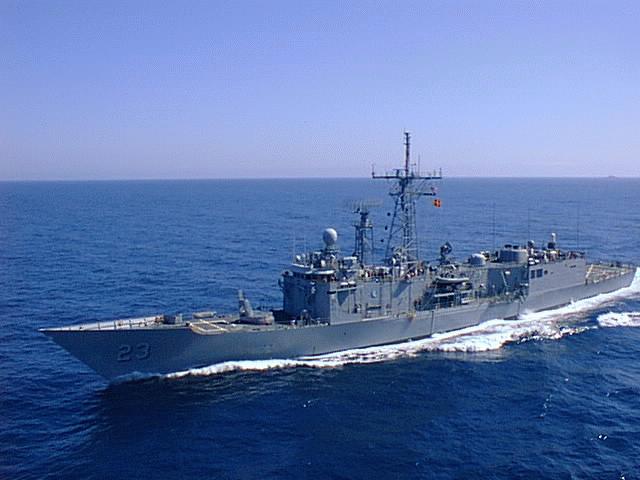Pakistan is going to buy 18 more F-16 Block 52 fighters doubling its fleet of advanced variant of Flying Falcons.The latest Fighting Falcons rolling off the Lockheed Martin's production line in Fort Worth, Texas, are advanced Block 50/52 and lately, Block 60 versions. These production series represent the largest configuration change in the F-16 history, offering additional fuel and payload capacity, new or improved avionics and sensors, color cockpit displays with enhanced pilot/vehicle interfaces. Nine countries have already ordered Advanced Block 50/52/60 F-16s, including the USA, Greece, Israel, UAE, Chile and Poland.
Earlier in 2006 18 planes of this variant were delivered and sarcastically named as "Peace Drive 1". This contract which had a price of $3billion had an option of 18 more fighters if Pakistan needed them.
Turkey is upgrading the F-16/A/B block aircrafts of Pakistan to Block 40 standard through the Mid-Life Update program.
Advanced Engines
Advanced Block 50/52 aircraft have a common engine bay that allows customers a choice of engines in the 29,000-pound thrust class. The Block 50s and are powered by the General Electric F110-GE-129 and have the Modular Common Inlet Duct (known as the large mouth inlet). Block 60 aircraft (for the UAE) are fitted with GE F-110-GE-132 engine, a derivative of the F-110-GE-129 that is rated at 32,500 pounds of thrust. The Block 52s are powered by the Pratt & Whitney F100-PW-229 Improved performance Engine (IPE) which also has 29,000 pounds of thrust. The engine is configured with the Normal Shock Inlet (also known as the small mouth inlet). The aircraft is also equipped with an on-board oxygen-generating system replaces the liquid oxygen system of earlier versions to provide breathable air to the pilot. The system improves mission rate, maintainability, deployment flexibility and safety.
Targeting and Weapon Systems
For air/air missions, the aircraft is equipped with medium range missiles such as the AIM-120A AMRAAM. For close range combat, the aircraft can support the AIM-9X, IRIS-T, Python 4 and Python 5. The aircraft also retains the capability to use the six barrel 20mm Gatling gun. Block 52 configurations are also equipped with an advanced version of the APG-68 radar - the (V)9, while F-16E/F is fitted with the new APG-80 Active Electronic Scanning Array (AESA) system. These new radars have improved performance, higher processing speed and memory capacities and improved high-resolution synthetic aperture radar mode which allows the pilot to locate and recognize tactical ground targets from considerable distances. In conjunction with inertial aided weapons, the advanced F-16 gains an enhanced capability for all-weather precision strike from standoff distances. Modern F-16s of the advanced Block 50/52 can accommodate various targeting systems, including the Lockheed Martin Sniper XR/Pantera, and Northrop Grumman/RAFAEL Litening. These pods are used for target identification, acquisition and designation for smart, GPS guided munitions or laser guided bombs such as GBU-31 Joint Direct Attack Munition (JDAM), the AGM-154 Joint Standoff Weapon (JSOW), SPICE guided weapon, and CBU-103/104/105 Wind Corrected Munitions Dispenser (WCMD). The later can also be cued by target data provided directly from the radar, in low visibility conditions. On recce missions, advanced F-16s can also carry autonomous reconnaissance pods on the centerline, on intelligence gathering penetration or standoff sorties.
Navigation Systems
A navigation pod, such as LANTIRN/Pathfinder and digital terrain models are contributing to a safe, accurate low level flight. The aircraft is also equipped with various navigation systems such as tactical air navigation (TACAN), VHF omnidirectional receiver (VOR), distance measuring equipment (DME), and instrument landing system. An integrated precision navigation suite consisting of a ring laser gyro inertial navigation system (INS), global positioning system (GPS), and digital terrain system (DTS) are also standard.
Cockpit Configurations
The standard configuration of an Advanced Block 50/52 cockpit features helmet-mounted cueing system, which allows the pilot to direct sensors or weapons to his line of sight or to help him find a designated target. Head-Up Display and several color multifunction displays and advanced recording and data-transfer equipment is used to reduce pilot workload in every phase of the mission. The cockpit is compatible with night vision goggles. A common configuration includes multi-channel VHF/UHF/HF/Data communications, satellite communication and tactical data link systems (such as the NATO-standard Link 16), in addition. Link 16 provides secure, jam-resistant, high-volume data exchange on a multi-node network. Also standard is the combined friend from foe interrogator/ transponder, which permits autonomous identification to maximize launch ranges of radar-guided air-to-air missiles at distances beyond visual range (BVR).
The upgraded aircraft will be equipped with the ITT Systems AN/ALQ-211 (v)9 Advanced Integrated Defensive Electronic Warfare Suite (AIDEWS) electronic warfare pod.The $49,097,182 firm fixed price Foreign Military Sales contract will provide systems software and support equipment 18 pods, four pod shells, two antenna coupler sets, two lab test benches, and data.
There may also be new equipment for the Pakistan Navy. There was no news as of yet on acquiring additional pair of P-3C Orion maritime patrol aircraft to replace those destroyed in the May 22 terrorist attack on PNS Mehran in Karachi.
However, there was a very strong possibility another Oliver Hazard Perry class frigate would be transferred to Pakistan when it was retired from USN service later this year. Intended to protect amphibious landing forces, supply and replenishment groups, and merchant convoys from submarines, they also later were part of battleship-centric surface action groups and aircraft carrier battle groups/strike groups.Fifty-five ships were built in the United States: 51 for the United States Navy and four for the Royal Australian Navy (RAN). In addition, eight were built in the Republic of China (Taiwan), six in Spain, and two in Australia for their navies. Former U.S. Navy warships of this class have been sold or donated to the navies of Bahrain, Egypt, Poland, Pakistan, and Turkey.


No comments :
Post a Comment